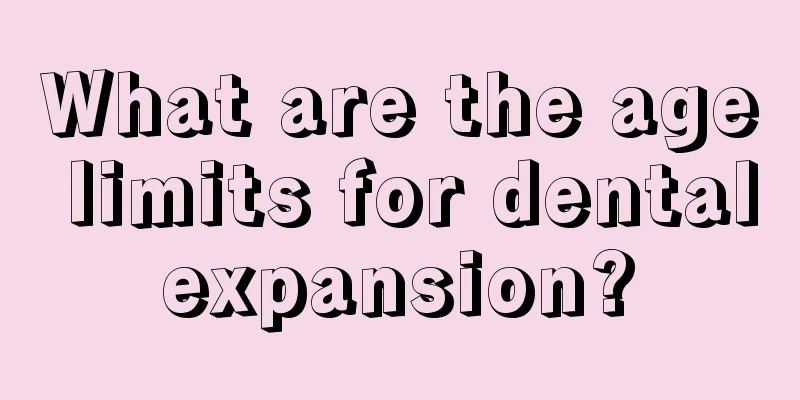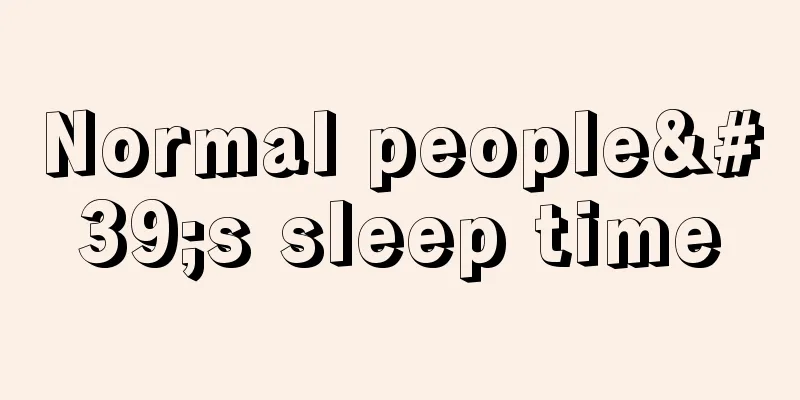What are the age limits for dental expansion?

|
A dental expander is a device used to straighten teeth. As we all know, the younger the age, the better the effect of orthodontic surgery. If you wait until adulthood to undergo orthodontic surgery, the teeth have already begun to take shape, so the effect will not be as good, and of course the correction time will be much longer. So, what are the age restrictions for dental expansion? The following will give you a detailed introduction! Age restriction Adults have more limitations when it comes to receiving comprehensive orthodontic treatment than children. If the problem of tooth bite is caused by the underdevelopment of the upper and lower jaws, since the face and bones of an adult have basically been formed, it must be cured through orthodontic treatment. Only by combining orthodontics and maxillofacial surgery can deviations in jaw development in adults be corrected. Functional braces, which are used to correct abnormal jaw bone development in children, are generally not successful in adults. Best time The best time for orthodontic treatment varies according to different age groups: 1. Primary teeth period (3 to 5 years old). The main purpose of correction is to promote the normal development of children's maxillofacial region. During this period, the main targets are malocclusions such as deciduous teeth crossbite (i.e. overbite), mandibular protrusion, posterior teeth crossbite, etc. that hinder the normal development of the maxillofacial region. It also promptly corrects bad habits that affect the normal function of the oral cavity, such as tongue sticking out and lip biting, to prevent further occurrence of malocclusion. 2. Tooth replacement period (girls: 8-10 years old, boys: 9-12 years old). Generally, there is no need to correct the local malocclusion that occurs during this period. However, for bad habits such as lip biting, tongue sticking out, and mandibular protrusion, or abnormal facial shape, anterior crossbite, functional mandibular retrusion, and abnormal relationship between the upper and lower jaws, it is often necessary to go to the hospital to see an orthodontic specialist for examination in time to determine whether it is a dental, functional, or skeletal malocclusion in order to clarify the treatment plan. 3. Permanent teeth period (girls: 11-14 years old, boys: 13-15 years old). Permanent dentition begins to form around the age of 12. Once malocclusion occurs at this time, it will not disappear automatically and can only be corrected through treatment by an orthodontic specialist. This period is the best time to correct malocclusion in children, with the best effect. All types of malocclusion can be corrected with orthodontic treatment. Treatment duration The course of orthodontic treatment is generally about two years, but the time required for treatment may vary depending on factors such as the age, severity, and response of the teeth to treatment of each patient. As long as you can cooperate well with the orthodontist, go for follow-up visits on time, maintain oral hygiene and protect the braces from damage, the efficiency of orthodontic treatment can be greatly improved. |
<<: Causes, hazards and relief methods of loose teeth with gaps
>>: What's wrong with small pimples on the eye epithelium?
Recommend
What are the uses of magnesium oxide?
Everyone knows that magnesium is a relatively act...
What are the common hazards of fibroids
Fibroid is a benign tumor caused by focal prolife...
What's going on with the peeling skin on my hands and feet
Peeling of the hands and feet is more common in w...
What are the effects of high folic acid
Many women take folic acid after pregnancy becaus...
Black tea vitamin E can prevent bladder cancer. What causes bladder cancer?
The bladder is an important urinary system in our...
Chemotherapy regimen for breast cancer
Although the breast is not one of the important o...
Is nasopharyngeal cancer always blocked?
Is nasopharyngeal cancer always blocked? 1. The n...
What harm does ovarian cancer do to the body
Cancer is a disease that often causes a high mort...
Mouth ulcer is very painful
Generally, it is easy to get oral ulcers when you...
What are the good measures for diagnosing ovarian tumors
Ovarian malignant tumors will seriously affect th...
The dangers of lung cancer puncture
What are the dangers of lung cancer puncture? The...
What are the early symptoms of bronchial lung cancer?
What are the early symptoms of bronchogenic carci...
Is back pain caused by uremia?
Uremia is a comprehensive disease. It does not si...
What is Leucine Aminotranspeptidase?
Leucine aminotranspeptidase is a protease in the ...
Risk factors of osteosarcoma
What are the dangers of osteosarcoma? This is a q...









